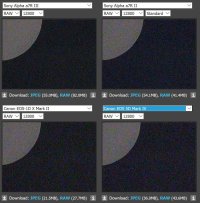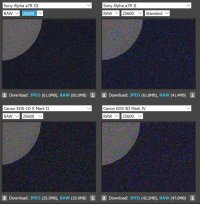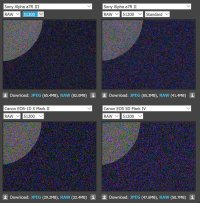rjbray01 said:
Even the best electronic viewfinders don't hold a candle to optical - no comparison. Personally I know I won't consider switching until I can hardly tell the difference.
Late last year I literally sold all of my Canon gear because of my experience using a camera with an EVF on vacation. It made the OVF on my Canon bodies seem like ancient technology.
If you haven't tried a new camera with an EVF you really owe it to yourself to try it out... for me, it was a game changer. And I'm not a fanboy of any particular brand - I've shot Canon seriously beginning with the 5DII (after many years and many iterations of the Rebel bodies). Over the past six years or so I've owned at least three serious Canon bodies at any given time (5DII, III, IV, 1DX, 6D, 5DSR).
I went to Italy for a few weeks last year and didn't want to drag my heavy Canon gear all over the country so I decided to buy a Fuji X100F just for the trip (having owned earlier iterations previously and enjoyed the interface)...
The EVF technology has come so far in such a short period of time.
I absolutely loved using the camera, and the EVF was really a remarkable thing to experience - "seeing" your photo before you take and and adjusting as needed before pushing the shutter button, rather than chimping.
And even though the Fuji is APS-C (and half the megapixels I was used to with the 5DSR), I found the images not only comparable (if not needing to crop) but the JPEGs were remarkable. It changed all my notions about gear and photography.
I sold every Canon camera I had and bought most of the Fuji lens line-up and a few XT2s.
My wife has always shot Sony, and with the A7RIII, I bought my second Sony body (I had an A7S long ago for low light but didn't like it for a variety of reasons and sold it).
The A7RIII is amazing. The eye detect is phenomenal for portrait work. I spent two full days on a shoot in LA a few months ago and it enabled me to work faster and with more precision with wide aperture lenses.
And it is also incredible for sports, with it's super fast focus and tracking.
For me, I love Sony for action and portraits and Fuji more for "creating images", if that makes sense, though both are really great for everything (I've used both systems for everything).
I still love Canon (though I own zero Canon products at this point) and enjoy reading these forums. And while they still do great in terms of overall marketshare, I've found talking to people - other pro and semi-pro photographers - that there is definitely a shift happening at a certain level. Not mass consumer and hobbyists maybe, but like at my local camera shop, every single person that works there shoots either Sony or Fuji. And when I run into other photographers at events and such, I'm surprised how many are switching from Canon and Nikon to mirrorless (Sony, Fuji, and Olympus, in that order) for weight, benefits of mirrorless, and other reasons.
Anyway, not trying to be a troll or anything, just sharing my own experience. I think competition is great because it forces new advancements and competition in pricing, so it's good for everyone IMO. Plus cameras from all major companies these days are all great, but there are enough differences to give people some options to choose what best suits them. But I really love the EVF on the newer cameras (and no, they weren't this good even a few years ago).



